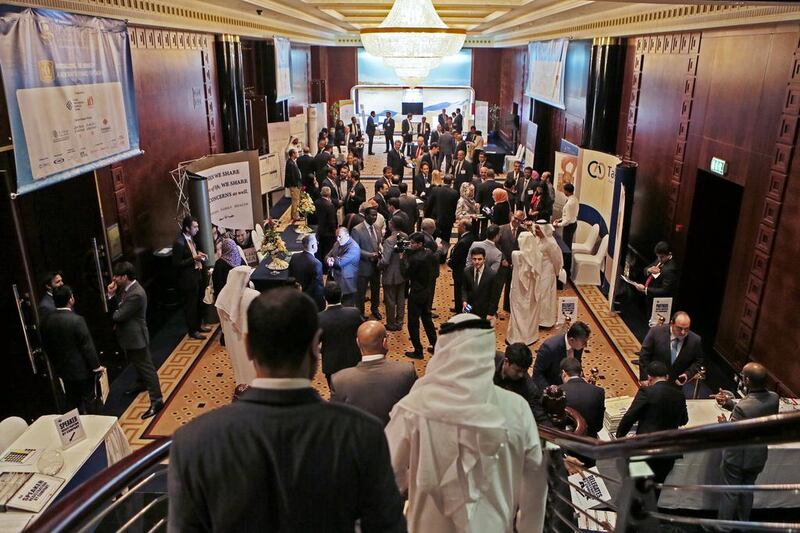The UAE’s takaful bosses are finding it hard to explain exactly why people should buy from Sharia-compliant insurers.
“We need to look in the mirror and ask ourselves the right questions,” says Chakid Abouzaid, the group chief marketing officer of GroupMed Reinsurance Brokers.
“Are we different from conventional insurers? Not enough,” he says.
Ajmal Batty, the chief executive of Tokio Marine Middle East, says: “We have perhaps lost sight of the track we have been on. In the UAE we are supposed to be the leader in everything – but when it comes to takaful, we have failed to differentiate ourselves.”
Low profit margins, lack of scale and a failure to differentiate Islamic insurance products from their conventional rivals, have meant that takaful companies have not taken advantage of the massive growth of Sharia-compliant financial assets since the start of the decade.
Takaful premiums represent less than 1 per cent of Sharia-compliant assets worldwide and have not been growing in popularity as quickly as Islamic equity instruments. While Islamic finance overall has grown by double digits since the beginning of the decade, growth of takaful premiums has slowed from 16 per cent per year in 2012 to 7.6 per cent in 2013.
Worldwide takaful premiums excluding Iran total US$14 billion – a tiny fraction of the $4 trillion of insurance premiums underwritten worldwide.
“We are on the spot as a new industry,” says Ghassan Marrouche, the general manager of Takaful Emarat.
“The question is how we address the needs of consumers – that’s where we need to be innovative,” he says.
This is principally an issue with the business models adopted by the UAE’s takaful companies, says Safder Jaffer, the managing director and consulting actuary at Milliman. Mr Jaffer points out that return on equity in the takaful sector in the UAE is about 0.4 per cent, compared to 6 per cent in Saudi Arabia and 14 per cent in Malaysia.
In Saudi Arabia, companies operate using a mudarabah contract, under which the insurer and the policyholder share the risks associated with a policy and the profits from invested premiums. In the UAE, by contrast, companies typically adopt the wakalah model, in which policyholders pay a fee to insurers to buy into an investment fund, proceeds from which, minus the value of successful claims, are returned to policyholders.
“The cooperative model has worked and has continued to work,” Mr Jaffer asserts, citing Saudi Arabia’s more profitable takaful industry. Saudi companies have stronger incentives to cut costs, while UAE companies set high prices and have high costs, eating into margins and revenues. Regulatory enforcement is also stronger in Saudi Arabia, which is good for the books of takaful companies, Mr Jaffer says.
The majority of takaful business in the UAE focus on health and motor insurance – areas in which the conventional product offering is both popular and highly competitive.
In these markets, “takaful firms offer no unique value proposition, so they are fighting [conventional insurers] for the same market share,” says Mr Jaffer.
Lakhdar Moussi, a consultant who advises the private equity firm PineBridge Investments Middle East, says: “You cannot talk of an industry that is concentrated on one or two market segments. To [underwrite] aviation and engineering, you need to be of a minimum size.”
Inability to underwrite big premiums means takaful firms lose business.
“You need companies who are able to take responsibility for big risks,” Mr Moussi says.
Irshied Tayeb, the head of insurance and reinsurance at Bin Shabib Associates, agrees. “Size matters in terms of big-ticket industries. For big companies, it’s not about service.” Instead, they ask: “Are you going to be there when I’m hit with a billion-dollar loss?”
Bigger insurers also tend to be more profitable, as risk management becomes easier. In Saudi Arabia, the three largest Sharia-compliant insurers underwrote more than 50 per cent of takaful premiums and earned 75 per cent of the industry’s profits.
Takaful managers need to be able to put long-term profitability ahead of short-term dividend payouts. Many takaful companies pay dividends even if their policy holder portfolios are not making a return. That needs to stop, he says.
Pursuit of dividends means rising fees for policyholders, which is a bad strategy in a competitive environment, Mr Jaffer says. “Fees need to be aligned to actual expense costs. Increasing fees to keep shareholders happy doesn’t work.”
The simplest solution for takaful companies is to focus on the fundamentals, Mr Jaffer argues. “If your underwriting and risk management are sound, you won’t make a loss and you will increase your equity.”
The market opportunity is there – insurance penetration in the UAE stands at 1.1 per cent of GDP, lower than in other developed markets. Insurance penetration is much lower elsewhere in the Arabian Gulf, according to Zurich, an insurer.
“We are at the heart of the marketplace here in the GCC and the Middle East,” says Chirag Shah, the chief strategy officer at the Dubai International Financial Centre. “The potential for growth here is phenomenal.”
abouyamourn@thenational.ae
Follow The National's Business section on Twitter





